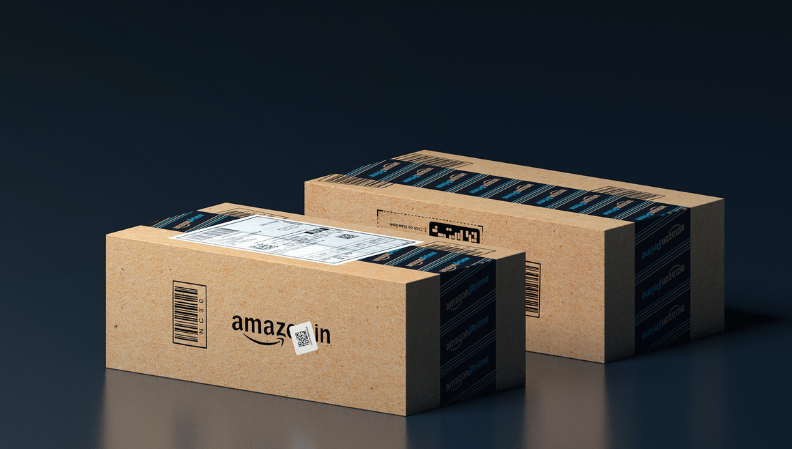Are you ready to embark on an exciting journey to build your own e-commerce empire? Whether you’re a seasoned entrepreneur or just getting started, this comprehensive guide will provide you with all the tools and knowledge you need to create a successful drop shipping business. Let’s dive into the world of e-commerce and explore the secrets to success!
Short Summary
- Start your own e-commerce business and leverage the power of dropshipping & multi-channel selling!
- Choose an exciting niche, design a user friendly store & secure payment gateways for higher conversions.
- Analyze customer feedback to measure success and scale up - let’s get started now!
Understanding E-Commerce
E-commerce, or electronic commerce, fuels the world of online business, allowing buyers and sellers to complete transactions over the internet. At the heart of this digital marketplace lies the dropshipping business model, which has gained popularity due to its low barriers to entry and potential for high profits. But how does dropshipping work, and what makes it so attractive?
When a customer makes a purchase in a drop-shipping business store, the order is sent to a drop-shipping supplier. This supplier then sends the item directly to the customer. This eliminates the need for the seller to hold inventory, cutting down on overhead costs and making it easier to sell online with just an internet connection and a well-designed drop-shipping store website. By starting your own drop-shipping business, you can take advantage of this efficient business model.
The dropshipping model thrives on multi-channel selling, which means offering products on various platforms such as Etsy, Amazon, or even social media to increase exposure and drive sales. By harnessing the power of e-commerce and dropshipping, you can create a profitable online business that reaches customers worldwide.
Advantages of Starting an E-Commerce Business
One of the main advantages of starting a drop-shipping business is:
- Low startup costs compared to traditional retail stores
- No need for a physical storefront, saving money on rent, utilities, and other expenses associated with brick-and-mortar locations
- Ability to reach a larger customer base
- Opportunity to work with drop-shipping suppliers to fulfill orders more efficiently
Easier inventory management is another fantastic benefit of the drop-shipping model. By working with drop-shipping companies, you can effortlessly keep track of your inventory and automate the process of ordering and restocking. This helps you focus on growing your business and staying ahead of the competition.
Lastly, to start a drop-shipping business, you’ll have the opportunity to separate your personal and business finances, making it easier to manage your money and plan for future growth. With a well-structured drop-shipping business plan and the right strategies in place, you can build a successful online store and enjoy the perks of e-commerce.
Choosing a Niche for Your E-Commerce Business
Before diving into the world of e-commerce, it’s crucial to choose a niche for your dropshipping business. This involves researching market trends, identifying customer needs, and selecting products with high demand and low competition. By focusing on a specific niche, you can differentiate your business from others and meet the unique needs of your target market.
Developing a solid business concept is essential for creating a successful dropshipping business store. This concept will serve as the foundation for the products you sell, your website’s design, and your marketing strategy. Moreover, having a strong business concept can help you manage your personal and business finances more effectively.
Strong branding plays a vital role in setting your e-commerce business apart from the competition. By creating a memorable brand identity and providing quality products, you can attract loyal customers and build a thriving online store in your chosen niche.
E-Commerce Business Models
While drop-shipping is a popular business model for e-commerce retailers, there are other business models to consider as well. Wholesaling, private labeling, and affiliate marketing each offer their own unique benefits and challenges, depending on your goals and resources. The drop-shipping model is particularly attractive to many entrepreneurs due to its low startup costs, no need to carry inventory, and the ability to start a business by yourself during your evenings and weekends. However, the biggest disadvantage of drop-shipping is the low profit margins due to high competition and low barriers to entry.
Regardless of the e-commerce business model you choose, it’s essential to create a strong marketing strategy, manage inventory and order fulfillment, and comply with legal and tax regulations. By focusing on these key areas, you’ll be well on your way to building a successful online business.
Creating Your Online Store
Creating an e-commerce store involves selecting an e-commerce platform, designing a user-friendly e-commerce website, and ensuring secure payment processing for your online store.
In the following subsections, we’ll provide more details on how to set up your online store efficiently and effectively.
Selecting an E-Commerce Platform
When choosing an e-commerce platform for your online store, consider factors such as your budget, the features you need, and the level of customization you want. Popular e-commerce platforms include Shopify, BigCommerce, and Wix, each offering its own unique benefits and features.
Shopify is a highly recommended e-commerce platform for dropshipping businesses, thanks to its ease of use, vast range of features, and ability to integrate with various apps and services. It provides a smooth experience for both beginners and experienced users alike, making it a top choice for many online entrepreneurs.
For those who prefer a more hands-on approach, using a website builder or content management system (CMS) like Hostinger Website Builder can be a great alternative. These tools offer more control over the design and functionality of your online store, but may require more technical skills and time investment compared to using an all-in-one e-commerce platform.
Designing Your Online Store
When designing your online store, it’s essential to choose a visually appealing theme that aligns with your brand identity. A well-designed website not only attracts customers, but also helps build trust and credibility in your business. To create a user-friendly layout, consider using a simple navigation structure, ensuring your product images are clear and easy to find, and optimizing your checkout process for speed and ease. This will make it easier for customers to browse and purchase products from your store, leading to higher conversion rates and more sales.
Lastly, don’t forget to optimize your online store for mobile devices, as more and more customers are shopping on their smartphones and tablets. By making your website responsive and mobile-friendly, you’ll be able to reach a wider audience and provide a seamless shopping experience for all users.
Payment Gateways and Security
Setting up secure payment gateways and implementing security measures is crucial for protecting customer data and ensuring smooth transactions in your online store.
There are several payment gateways available, including:
- Stripe
- PayPal
- Square
- Authorize.net
- Amazon Pay
Each of these gateways offers unique features and benefits, so choose the one that best fits your business needs.
In addition to selecting a payment gateway, it’s essential to encrypt customer data and use two-factor authentication to protect sensitive information. This will help safeguard your customers’ personal and financial information, providing them with peace of mind when shopping on your site.
By implementing strong security measures and using reliable payment gateways, you can build trust with your customers and reduce the risk of fraud, chargebacks, and other security issues that can negatively impact your e-commerce business.
Marketing Your E-Commerce Business
Once your online store is up and running, it’s time to market your e-commerce business and attract customers. Here are some strategies you can use:
- Social media marketing
- Email marketing
- Content marketing
- Search engine optimization (SEO)
By implementing these strategies, you can drive traffic to your website and boost sales, ultimately helping you sell products more effectively.
Social media marketing is a powerful way to reach a wider audience, build relationships with customers, and increase brand awareness. By creating engaging content and promoting your products on popular social media platforms, you can attract potential customers and drive sales.
Email marketing and content marketing are also essential for building relationships with existing customers and generating leads. By providing valuable content and keeping your subscribers informed about new products and promotions, you can encourage repeat business and foster customer loyalty.
Finally, optimizing your website for search engines can help increase organic traffic and improve your online visibility, making it easier for customers to find and purchase your products.
Managing Inventory and Order Fulfillment
Managing inventory and order fulfillment is a crucial aspect of running a successful e-commerce business. While drop-shipping is a popular choice for many entrepreneurs, other options include third-party logistics providers or in-house fulfillment centers. Drop-shipping offers several advantages, such as low startup costs, no need to carry inventory, and the ability to start a business by yourself during your evenings and weekends. However, it can be challenging to maintain a consistent level of quality and manage customer service and returns.
Alternatively, 3PL providers and in-house fulfillment centers can provide more control over product quality, better customer service, and faster delivery times. Nevertheless, these options can be expensive to set up and maintain, and they require a significant upfront investment.
By carefully considering your business model and resources, you can choose the best method for managing inventory and order fulfillment, ensuring a smooth experience for your customers.
Pick And Ship Services
If you’re looking for a streamlined solution for managing inventory and order fulfillment, Lobi Elements Pick and Ship Services may be the answer. These services are specifically tailored to e-commerce brands, offering pallet storage starting at just $25 per month.
Lobi Elements Pick and Ship Services provide a hassle-free solution for inventory management and order fulfillment, simplifying the process for e-commerce businesses. Here’s how it works:
- Sign up for an account and select a storage plan.
- Ship your products to the Lobi Elements partner warehouse.
- Your products will be stored and managed by a trusted fulfillment provider.
With a variety of storage plans available, Lobi Elements Pick and Ship Services cater to businesses of all sizes and budgets. By streamlining your inventory management and order fulfillment process, you can focus on growing your e-commerce business and providing an excellent customer experience.
Legal Considerations for E-Commerce Businesses
When starting an e-commerce business, it’s essential to consider the legal aspects, such as registering your business, obtaining necessary permits and licenses, and complying with tax regulations. By taking these steps, you can protect your personal assets and ensure your business operates legally and efficiently.
To register your business, you’ll need to:
- Create a name (usually your domain name)
- File for an LLC or corporation with your secretary of state. This process will provide your business with personal liability protection, separating it from your personal assets.
- Once registered, you’ll receive a tax identification number (TIN) from the IRS, which is required for paying sales tax on goods sold.
In addition to registering your business, make sure to obtain any necessary permits and licenses, such as a sales tax ID, reseller’s permit, or a business license. Complying with these requirements will help keep your e-commerce business in good standing and ensure a smooth, successful operation.
TOP 5 WEBSITE TO FILE YOUR LLC - READ
Measuring Success and Scaling Your E-Commerce Business
As your e-commerce business grows, it’s important to measure your success and implement strategies for scaling your operations. This involves tracking key performance indicators (KPIs), such as sales, customer satisfaction, and website traffic, to evaluate your business’s performance.
Analyzing customer feedback is also essential for understanding what your customers like and dislike about your products and services. By identifying areas for improvement, you can make the necessary changes to enhance the customer experience and boost satisfaction levels.
Finally, consider implementing growth strategies to expand your e-commerce business, such as entering new markets, launching new products, or optimizing your website for search engine optimization (SEO). By focusing on these strategies, you can continue to grow your business and reach new heights of success in the world of e-commerce.
Summary
In conclusion, starting a successful e-commerce business involves understanding the basics of e-commerce, choosing a niche, creating a visually appealing and user-friendly online store, and implementing effective marketing strategies. By carefully managing inventory, order fulfillment, and legal considerations, you can create a thriving online business that reaches customers worldwide. As you embark on this exciting journey, remember to measure your success, adapt to customer feedback, and implement growth strategies to ensure your e-commerce empire continues to thrive.
Frequently Asked Questions
What are the 3 types of e-commerce?
E-commerce comes in three exciting forms: business-to-business, business-to-consumer, and consumer-to-consumer.
Explore the possibilities today!
How do I become an ecommerce?
Becoming an ecommerce expert is a rewarding process that requires research, understanding ecommerce, learning content marketing, developing SEO knowledge, exploring platforms, mastering email marketing, and building user acquisition strategies.
With dedication and focus you can become an ecommerce expert in no time!
How to do e-commerce for beginners?
Start an e-commerce business by researching e-commerce models, writing a business plan, choosing a business name and brand, registering your business, creating a website, and sourcing and developing products or services.
Developing a successful e-commerce business takes time and effort, but the rewards can be worth it.
How profitable is dropshipping?
Dropshipping can be a lucrative business with profit margins between 10%-20%, though it may start lower. With the right niche, website, costs, and more, you have potential to make a great profit!
It is important to do your research and find the right niche for your dropshipping business. You should also consider the costs associated with setting up a website, marketing, and other expenses. Once you have done that you will be on the right path.
How do I choose a niche for my dropshipping business?
Research market trends, identify customer needs and pick products with high demand and low competition - these steps will help you choose a perfect niche for your dropshipping business!
By understanding the market, you can make informed decisions about which products to sell and how to price them. You can also use market research to identify customer needs and preferences, so you can create a product offering that meets those needs. Finally, you can also learn to read.
readers also enjoyed…
keep the momentum going.
explore more blogs and industry news






